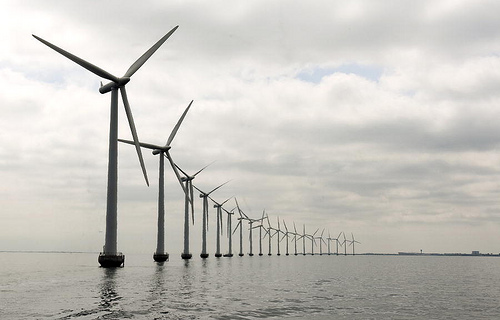The US has installed over 25 gigawatts of wind, and thanks to hodge-podge of policy incentives, research and development, and private investment wind has become the poster-child of renewable energy and at the utility-scale has achieved grid-parity with conventional fossil-fuel energy. However not a single kilowatt of offshore wind has been developed, despite it being a stronger and more consistent energy source than its counterpart on land, closer to large populations where the energy is needed, and already proven commercial technology.
Isaac Pearlman
Imagine a solar developer passing up a perfectly sunny and suitable site capable of producing enormous amounts of clean solar power for another area that has less sun, produces less energy, and is farther from where the energy is needed. While this seems to make little sense, nationwide this is exactly what we have done with our wind power.

Middelgruden wind farm off the Danish coast.
The content & opinions in this article are the author’s and do not necessarily represent the views of AltEnergyMag
Comments (0)
This post does not have any comments. Be the first to leave a comment below.
Featured Product


